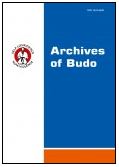2011, Volume 7, Issue 4
“Declared bravery” of Polish police officers (comparative studies of 1998 and 2010)
Ryszard Kałużny1, Adam Płaczek1
1University of Lower Silesia, Wrocław, Wrocław, Poland
Author for correspondence: Ryszard Kałużny; University of Lower Silesia, Wrocław, Wrocław, Poland; email: ryszard_kaluzny[at]op.pl
Full text
Abstract
Background and Study Aim: The most general mission of the police force in a democratic country is to provide its citizens with real safety and security. This mission can be fulfilled by the representatives of a given society recruited from among brave people. The aim of the study is to resolve the following issue: Has the level of bravery of police officers changed over the period of the twelve years of transformations of the Polish police force (1998 – 2010)?
Material and Methods: The authors of the article studied 124 police officers in 2010 and the results were then compared to the 126 police officers studied in 1998 with the same tool (the KK’98 questionnaire). The verbal simulation method employed enables one to estimate bravery in an indirect way. The bravery criterion applied was the declared way of action in the situations in which there was a threat of physical aggression.
Results: The police officers studied in 2010 do not differ from those studied in 1998 as regards the level of bravery. However, the result of the study obtained in 2010 is an indication of negative tendencies. Police officers are more inclined to resort to violence (instead of counteracting it in the way typical of brave people) in the case of a physical assault on a person whose relations with the respondent (i.e. a police officer) and the degree of violence of the assault have not been determined.
Conclusions: Over the twelve years between the studies there has not been any radical change in the system of recruiting candidates for the police or the methods and means used at all the stages of police training. The KK’98 questionnaire employed can be an effective selection tool as well as a criterion for reviewing the training effects in the police and other on-demand and uniformed public services.
Key words: aggression, aggressiveness, bravery, on-demand and uniformed public services, on-demand public services, valour




